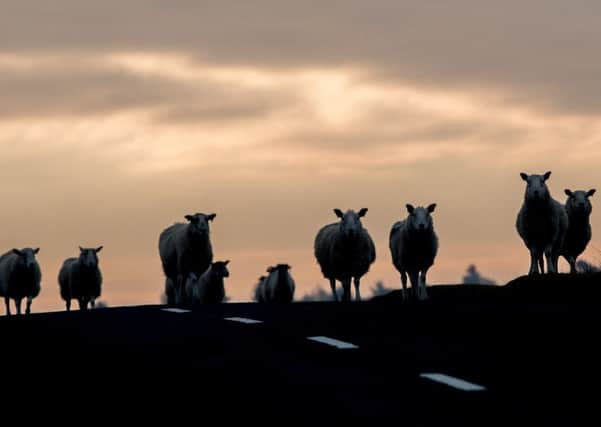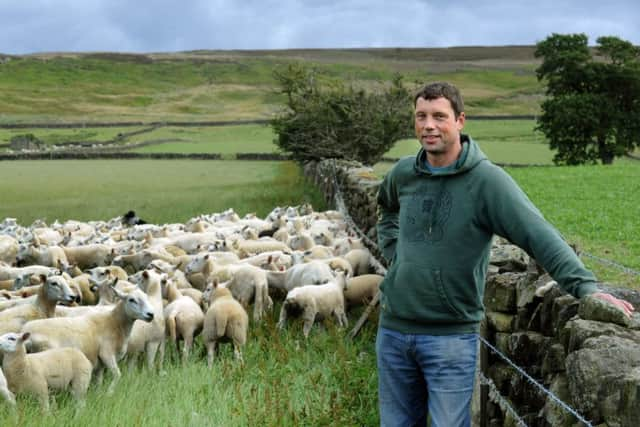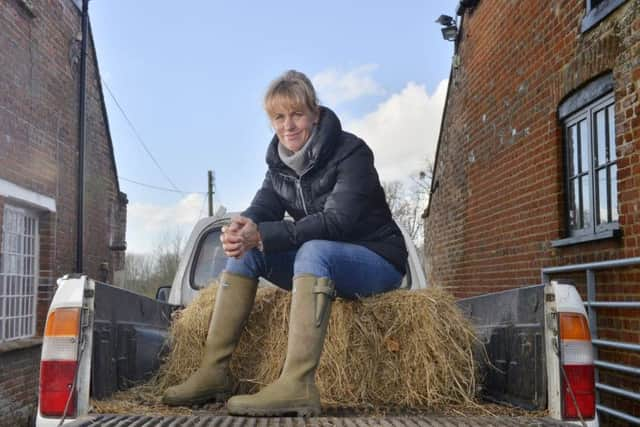Michael Gove reveals digital leap to track livestock movements between farms


A new Livestock Information Service will be operational next year, the Environment Secretary Michael Gove announced this week.
Being developed in partnership with ALIDMA, the industry body for UK animal identification manufacturers and suppliers, plus industry groups including the NFU (National Farmers’ Union), it will enable the whereabouts of individual animals to be identified and tracked when they are moved from farm to farm, or to market.
Advertisement
Hide AdAdvertisement
Hide AdInitially, dairy cows, cattle, sheep, pigs and goats will be tracked via electronic IDs in a move which the Department for the Environment, Food and Rural Affairs (Defra) says will improve traceability “from farm to fork”, and will equip the Government with comprehensive information about national herds and flocks when it needs to respond to a disease outbreak.


NFU president Minette Batters, who is credited with playing a leading role in making a strong case for the new service, said she believes it will be “totally transformational” for the industry. Generally, at present, farmers fill in paperwork to inform authorities about livestock movements.
In recent years, the introduction of an electronic ID system for sheep has given farmers the option of recording movements electronically but the system has proved problematic. Data recording issues have led to farmers being fined and many in the industry say it has done little to reduce bureaucracy or improve traceability.
Hopes are high that this new service, incorporating a range of farm animals, will be far slicker, and Richard Findlay, the NFU’s national livestock board chairman, hopes it will deliver the extra benefit of making redundant the need for six and 20-day standstills on livestock when new animals arrive on farms.
Advertisement
Hide AdAdvertisement
Hide AdMr Findlay, who farms on the North York Moors near Whitby, said: “We now have an opportunity to use really up to date technology to make the process of recording livestock movements a lot easier. You can do it real time so everyone is up to date rather than delays with the postal system.


“Hopefully it will be a lot more effective than the ARAMS system (currently used for sheep) because from a farmer’s point of view that’s been a disaster. I still complete a lot of paperwork even though I’m doing it online, so this new service will be a lot better, a lot more user friendly.
“Because it will be in real time, Defra will know where every animal is at any given time, rather than 70,000 to 80,000 lost animals being in limbo because the forms are in the post and are then inputted manually.
“I should be able to have online records on a phone app and it will come up with it straight away. The person moving the animal logs it on their phone and the person receiving it gets a text asking them to confirm the move.
Advertisement
Hide AdAdvertisement
Hide Ad“But where I see the real benefits is working towards getting rid of the six-day standstill. Because all movements should be up to date we would argue that the farm doesn’t need to be on a standstill from a disease risk point of view.”


Announcing the development of the new service this week, Mr Gove said: “This service will be instrumental in improving traceability and providing guarantees to consumers about the origin of their food.
“NFU President Minette Batters, among others, has helped lead the way on this, showing how it will drive a progressive and vibrant livestock industry once we leave the EU.
“Working hand-in-hand with industry, we will design and implement a service that puts food safety, animal health and welfare and environmental enhancement at its core.”
Advertisement
Hide AdAdvertisement
Hide AdJohn Cross, chairman of the Traceability Design User Group, the partnership of industry organisations involved in developing the new service, added: “The best use of proven modern technology will make it simple for farmers, food chain companies and government to use the service and reap the benefits of shared data that will put the UK livestock industry on the front foot as a global trading partner.”


The information service is a great example of what the Government and industry can achieve by working together, something that is “essential”, the NFU’s president Minette Batters said.
“I feel that this is totally transformational, underpinning our reputation in producing some of the best meat and livestock products in the world.
“It’s a win for government, a win for team agriculture and, most of all, it’s a win for the consumer.”
STANDSTILL RULE
Advertisement
Hide AdAdvertisement
Hide AdUnder current measures to tackle the spread of disease, when cattle, sheep and goats are moved on to a farm all such animals on that farm cannot be moved off the premises for six days, known as a ‘standstill’. In these circumstances, any pigs on that farm cannot be moved either, but for a 20-day period.
Any pigs that are moved on to a farm triggers a 20-day standstill for all pigs on the farm and a six-day standstill for any cattle, sheep and goats.
An exception to the rules allows livestock to be moved off farms during a standstill if they are being moved directly to slaughter.